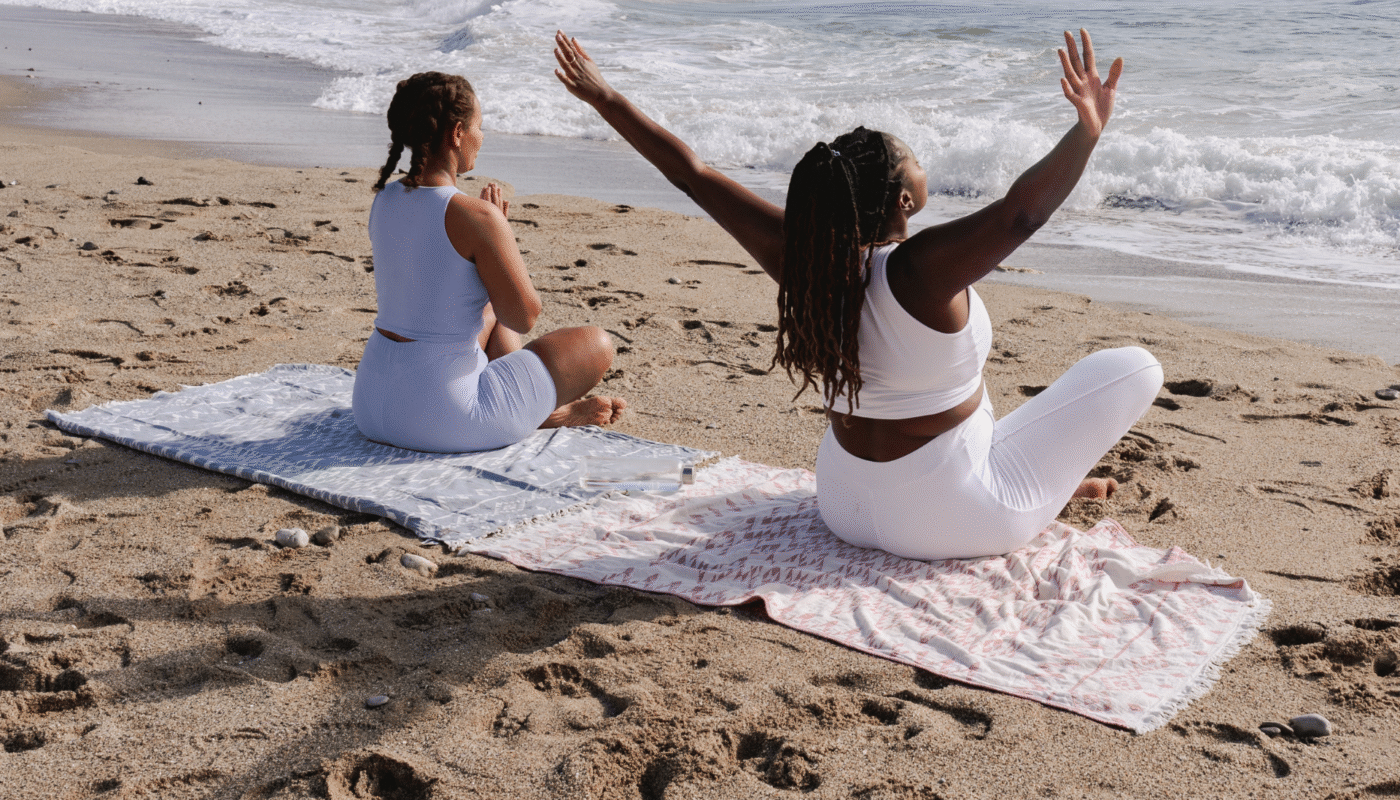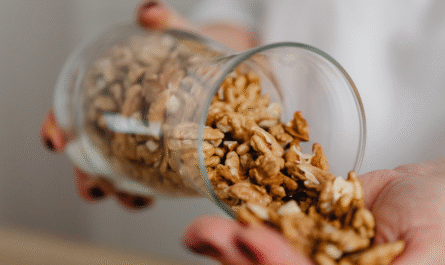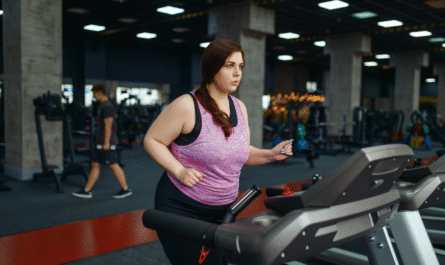In a world that never slows down, mental wellness activities are more essential than ever. Stress, burnout, anxiety, and depression are rising, and more people are realizing that taking care of their mental health is not optional, it’s vital. Whether you’re navigating personal struggles or simply trying to maintain emotional balance, these practices can support long-term mental clarity, peace, and emotional resilience.
This guide breaks down 25 powerful activities that promote mental wellbeing. You’ll find everything from mindfulness exercises for beginners and group therapy activities to solo self-care routines for stress. Whether you’re looking for new wellbeing activities or proven mental health improvement tips, there’s something here for everyone.
What are Mental Wellness Activities?
Mental wellness activities are intentional practices that support your emotional, psychological, and social well-being. They help manage stress, improve mood, and enhance your overall outlook on life. These activities range from simple daily habits like journaling to structured practices like therapy or group workshops.
They aren’t one-size-fits-all. What works for one person may not work for another. The key is consistency and alignment with your needs. Whether it’s mindfulness, movement, creativity, or connection, the right mix of mental health activities for adults can improve focus, self-awareness, and coping mechanisms.
These activities are also foundational in many mental health improvement tips shared by therapists and wellness experts. They form the core of self-care routines, promote emotional intelligence, and strengthen mental flexibility. They aren’t just temporary fixes, they’re lifelong tools.
Incorporating mental wellness practices into your daily life doesn’t have to be overwhelming. You can start small and build a routine that fits your lifestyle. The following 25 activities will give you multiple options to explore.
25 Mental Wellness Activities For Improved Mental Health
1. Daily Gratitude Journaling
Gratitude journaling is a powerful way to rewire your brain for positivity. Start each morning or end each night by writing down three things you’re grateful for. It could be something as simple as the sunlight through your window or a kind message from a friend.
Practicing gratitude consistently helps reduce negative thinking patterns. It increases dopamine and serotonin, two neurotransmitters responsible for happiness. Over time, this mental health exercise creates a mindset shift that allows you to focus on what’s going well, rather than what’s going wrong.
If you’re struggling with self-worth or emotional fatigue, use a mental health worksheet designed to prompt gratitude reflection. These can provide structure and make the habit easier to maintain.
This activity supports other wellbeing activities by creating a strong emotional foundation. It can complement mindfulness practices and even enhance your therapy progress by bringing positivity into focus.
2. Morning Stretch or Yoga Routine
Starting your day with movement is one of the most effective mental wellness activities. A 10-minute morning stretch or yoga session activates your nervous system, enhances circulation, and prepares your body and mind for the day.
Yoga combines mindfulness and movement, promoting inner calm and physical strength. For beginners, basic poses and breathing techniques serve as excellent mindfulness exercises for beginners.
As a self-care activity, stretching or yoga builds emotional resilience. It teaches you to breathe through discomfort and return to the present moment. This translates into better stress management throughout your day.
It’s also easy to include this practice in your existing self-care routines for stress. Add a calming playlist, light a scented candle, and make your morning practice a sanctuary.
3. Mindful Walking Outdoors
Walking becomes therapeutic when done mindfully. Slow down. Feel your feet on the ground. Notice the sounds around you. Mindful walking turns a routine task into a powerful mental health activity.
It reduces stress and anxiety by reconnecting you with your senses. Mindfulness activities like this promote groundedness and can help you interrupt spiraling thoughts.
If you have trouble sitting still for meditation, this is a great alternative. It offers the benefits of mindfulness without requiring you to be motionless. It’s also a great entry point for those looking for mindfulness exercises for beginners.
Incorporate this into your daily routine by setting aside 10-20 minutes each day to walk without distractions. Leave your phone at home. Let nature and your senses guide you.
4. Guided Meditation Sessions
Guided meditation is one of the most accessible and effective mental wellness practices. Whether you use an app or join a class, having a guide helps you stay focused and build your meditation skills.
Meditation activates the parasympathetic nervous system, reducing stress, anxiety, and even chronic pain. It’s backed by science and practiced by millions worldwide.
Use this as a reset during your lunch break or to unwind before bed. Even five minutes a day can create noticeable shifts in your mental clarity and emotional balance.
This form of self-care activity complements other practices like journaling, breathing exercises, and gratitude reflection. It’s also ideal for people looking for mindfulness exercises for beginners.
5. Art Therapy or Drawing Sessions
Creative expression can be incredibly healing. You don’t need to be an artist to benefit from art therapy. Drawing, painting, or coloring helps you externalize emotions that are difficult to verbalize.
This mental health activity for adults can lower cortisol levels and promote relaxation. It engages the brain differently, allowing emotional breakthroughs that might not surface through talking alone.
You can make this a group therapy activity by doing it with friends or family. Sharing your creations and discussing them can foster emotional connection and empathy.
If you’re not sure where to start, grab a coloring book or a simple mental health worksheet designed for creative prompts. The goal isn’t perfection; it’s emotional exploration.
6. Practicing Deep Breathing Techniques
Deep breathing is one of the simplest yet most effective mental wellness activities you can do anywhere, anytime. It activates your parasympathetic nervous system, helping to lower your heart rate and calm your mind. Techniques like box breathing or 4-7-8 breathing are easy to learn and provide immediate relief.
When you’re stressed, your body shifts into fight-or-flight mode. Deep breathing reverses this, signaling to your brain that you’re safe. This is especially helpful in high-anxiety moments, making it one of the go-to self-care routines for stress.
You can build this into your daily schedule by setting reminders to pause and breathe deeply for one to two minutes. Pairing it with mindfulness activities like gentle stretching or journaling can enhance its effects.
Over time, deep breathing can become a natural coping mechanism. It’s one of those mental health exercises that trains your mind and body to respond differently to pressure.
7. Regular Digital Detox Days
Our constant exposure to screens and notifications overwhelms the brain and fractures attention. A digital detox, even for a few hours, can dramatically improve mental clarity and mood. It’s one of the modern mental wellness practices everyone should try.
Digital detoxing allows you to reconnect with your surroundings, reflect more deeply, and reduce comparison and distraction. Turning off social media, email, and apps helps break the cycle of external validation.
Use your detox time to do other mental health activities for adults, like reading, nature walks, or cooking. Choose activities that are tactile and engaging to fully pull you into the present.
Over time, these breaks become essential self-care activities that recharge your mental battery. Many people find they sleep better and feel more present after reducing their screen time.
8. Volunteering or Acts of Kindness
Helping others boosts your own well-being. Volunteering or simply performing small acts of kindness increases feelings of connection, purpose, and gratitude, key ingredients for mental resilience.
Research shows that giving activates reward centers in the brain and lowers stress levels. It’s one of those wellbeing activities that improves both your life and someone else’s.
Volunteering can also serve as a group therapy activity, especially when done with others who share your values. It strengthens your social support network and gives you a break from personal stressors.
From helping a neighbor to working at a shelter, these actions reinforce self-worth and reduce feelings of isolation. Kindness truly is a form of emotional self-care.
9. Spending Time with a Pet
Interacting with animals has been shown to reduce anxiety, depression, and blood pressure. Pets offer unconditional love and a grounding presence, making time with them one of the most healing mental wellness activities.
Playing, walking, or cuddling with a pet provides sensory and emotional regulation. It helps regulate breathing and promotes feelings of safety, making it a natural anti-anxiety remedy.
This activity supports mental health improvement tips around building a routine and connection. Pets thrive on consistency, which encourages you to develop a rhythm to your day.
Whether it’s a dog, cat, bird, or even a therapy animal, their companionship can be a powerful part of your self-care routines for stress and recovery.
10. Joining a Support Group
Support groups allow people to share experiences, offer validation, and find common ground. Whether in person or online, they serve as powerful group therapy activities for those navigating similar struggles.
Being seen and heard by others who understand can significantly reduce feelings of shame or loneliness. These spaces often foster emotional healing more effectively than solo reflection.
Support groups can be centered around mental health, grief, addiction, parenting, or life transitions. Their structure allows for both sharing and listening, which builds empathy and resilience.
If you’re unsure where to start, consider community centers, mental health organizations, or even peer-led online groups. Participating regularly turns this into a transformative mental wellness practice.
11. Engaging in a Creative Hobby
Creative hobbies offer more than just entertainment, they’re essential outlets for emotional expression. Whether it’s painting, gardening, playing music, or crafting, these hobbies give your mind a break from stress and help you enter a flow state.
Flow state is a psychological condition where you’re fully immersed in an activity. It promotes mental clarity, reduces rumination, and builds self-esteem. These types of hobbies are powerful mental health activities for adults looking for mindful escapes.
Making time for creative work also reinforces discipline and self-care. It signals to your brain that your joy matters. That shift alone can be transformational when dealing with burnout or low mood.
Don’t aim for perfection. Let your hobby be imperfect and freeing. It complements other self-care activities and can even turn into a community activity when done with others.
12. Practicing Positive Affirmations
Positive affirmations are short, powerful statements that challenge negative thinking and rewire your self-perception. They are a central part of many mental wellness practices and cognitive behavioral therapy techniques.
Repeating affirmations like “I am worthy,” “I am resilient,” or “I handle stress with calm and clarity” helps interrupt negative mental loops. The key is consistency, daily repetition builds new neural pathways.
You can write them in a journal, say them aloud in the mirror, or keep them on sticky notes in visible places. Over time, these small reminders change how you treat yourself and how you respond to challenges.
Incorporate affirmations into your self-care routines for stress. Pairing them with deep breathing or mindfulness practices amplifies their effect on mental well-being.
13. Listening to Uplifting Podcasts or Music
The media you consume directly affects your mental health. Uplifting podcasts or music can be a fast, effective way to reset your mood and gain perspective. It’s one of the most underrated mental wellness activities.
Listening to inspiring interviews, calming music, or educational content on emotional resilience helps shift your thinking. It exposes you to new ideas and motivation when you’re feeling stuck.
Make it part of your morning or evening routine. Create playlists or download podcast episodes that support your mental health goals. Use this time intentionally, as a conscious act of self-care.
This also works well during other activities, like walking, cleaning, or driving. It turns passive time into an opportunity for mental health improvement and mindfulness.
14. Spending Time in Nature
Nature is a natural antidepressant. Exposure to green spaces, fresh air, and natural light lowers cortisol levels, improves mood, and restores attention. It’s one of the most well-researched mental wellness activities.
Just 20 minutes in a park, forest, or garden can lower stress and enhance your emotional state. The sensory input from nature, rustling leaves, bird songs, the smell of grass grounds you in the present moment.
Nature-based mindfulness activities like forest bathing or hiking without music deepen the impact. These outdoor sessions can be solo or shared as group therapy activities for emotional bonding.
For people in urban areas, even houseplants, balcony gardens, or walks around tree-lined streets can offer mental health benefits. Nature is always available in some form.
15. Learning Something New
Learning stimulates your brain, enhances focus, and builds confidence, all of which support mental health. Whether it’s a new language, recipe, instrument, or skill, the act of learning keeps your brain engaged and agile.
This kind of stimulation improves neuroplasticity, the brain’s ability to adapt and change. It’s a powerful mental health exercise that also helps prevent cognitive decline.
More importantly, learning gives you a sense of progress and momentum, which are critical during times of stagnation or depression. It builds optimism through achievement.
You can make learning a fun part of your wellbeing activities by setting goals that excite you. Use online courses, local workshops, or books to stay curious and motivated.
16. Attending Therapy or Counseling
Professional therapy remains one of the most impactful mental wellness practices. It provides a structured environment to explore thoughts, emotions, and behaviors with the support of a licensed expert. Unlike self-guided wellbeing activities, therapy offers tailored strategies for healing.
Whether you’re dealing with anxiety, trauma, depression, or life transitions, therapy gives you the tools to understand and reshape your mindset. Regular sessions promote long-term mental health improvement and emotional growth.
Therapy can also be integrated with self-care routines for stress, including journaling or mindfulness exercises. Many therapists will even suggest specific mental health worksheets and activities between sessions to deepen the work.
If individual therapy feels intimidating, consider group therapy activities that offer a sense of community and shared understanding. Both formats can be life-changing.
17. Setting and Sticking to Boundaries
Setting boundaries is a powerful form of emotional self-protection. It means clearly identifying what is and isn’t okay for your mental space, time, and energy. This is one of the most important mental health activities for adults, especially those prone to burnout.
Boundaries reduce resentment, enhance relationships, and increase self-respect. Saying “no” or communicating your limits isn’t selfish, it’s healthy. Boundaries make room for your own wellness activities and priorities.
Start small: protect your lunch break, disconnect from work after hours, or limit time with toxic people. Each step strengthens your internal compass.
Practicing boundaries alongside other self-care activities reinforces your autonomy and emotional clarity. Over time, this leads to a more balanced and empowered mental state.
18. Unplugged Creative Writing or Journaling
Writing is a direct channel to your inner world. Unplugged journaling (pen and paper, no screens) fosters deep emotional processing. It helps you uncover patterns, track your progress, and release stuck thoughts.
This activity can serve both as a reflection and a release. It’s ideal for those who benefit from private, solitary mental wellness activities. Prompts can guide you, or you can use freewriting to let thoughts flow.
Use journaling to answer questions like: “What am I feeling right now?” or “What do I need more of in my life?” This form of self-inquiry enhances self-awareness and decision-making.
Pair journaling with a mental health worksheet or gratitude list to add structure. Over time, your journal becomes a map of growth and resilience.
19. Trying Aromatherapy or Scent-Based Relaxation
Aromatherapy leverages the connection between scent and the nervous system to promote calm and focus. Essential oils like lavender, eucalyptus, or citrus can shift your emotional state within minutes.
You can diffuse oils in your workspace, add a few drops to a bath, or apply them to your skin with carrier oils. This makes aromatherapy a versatile self-care routine for stress management.
Scent can also be integrated into mindfulness activities. Take a moment to breathe in a calming scent intentionally, noticing how it affects your mood.
Aromatherapy is particularly helpful at night when preparing to rest. Paired with breathing exercises or meditation, it enhances your overall mental wellness practice.
20. Building a Morning or Nighttime Routine
Routines provide structure, predictability, and stability. Creating a simple morning or nighttime routine can dramatically affect your mood and energy. It reduces decision fatigue and sets the tone for intentional living.
A solid morning routine might include journaling, stretching, and drinking water. An evening one could include reading, gratitude, and light stretching. These rituals become anchor points during chaotic days.
Consistency is key. Your brain learns to associate these routines with emotional regulation. That’s why they’re often featured in top mental health improvement tips.
Make sure your routines include at least one dedicated mental wellness activity, whether it’s meditation, silence, or self-reflection.
21. Doing a Random Act of Self-Compassion
Self-compassion is treating yourself with the same kindness you’d offer a friend. This might look like canceling plans to rest, forgiving yourself for a mistake, or celebrating a small win.
These small acts shift your inner dialogue and reduce self-criticism. They’re some of the most personal yet profound mental wellness practices.
Write yourself a note of encouragement, take yourself on a solo date, or simply acknowledge your effort on a tough day. These gestures accumulate emotional strength.
Self-compassion feeds into all other wellbeing activities by making them feel deserved rather than earned. It supports long-term emotional safety.
22. Practicing Progressive Muscle Relaxation (PMR)
PMR is a guided practice where you tense and relax different muscle groups to release physical tension. It’s often used to combat anxiety, insomnia, and panic attacks.
This technique brings awareness to how stress manifests in the body. It’s a physical and mental health exercise rolled into one, making it ideal for stress relief.
You can practice PMR lying down in a quiet space, following an audio guide or script. It pairs well with aromatherapy or soft music for deeper relaxation.
Incorporate PMR into your evening routine as a transition to sleep or post-work decompression. Over time, it trains your body to recognize and release stress more efficiently.
23. Using Visualization or Mental Rehearsal
Visualization involves imagining a peaceful scene, desired goal, or successful experience in vivid detail. It activates the brain similarly to real-life experience, helping you build confidence and reduce anxiety.
Athletes use visualization to mentally rehearse performances, and it works just as well for emotional preparation. Imagine yourself handling a conflict calmly or entering a space with confidence.
You can also visualize safe, calming places to retreat to mentally during panic or high stress. This builds inner safety and resilience.
Pair visualization with mindfulness exercises for beginners. It blends well with meditation and deep breathing practices.
24. Writing Letters You Don’t Send
This journaling technique helps release unresolved feelings without confrontation. Write to a person, version of yourself, or a situation you need closure from. Pour out your thoughts unfiltered.
These letters offer emotional catharsis and insight. They allow you to express pain, anger, grief, or gratitude in a safe, nonjudgmental way.
Once written, you can choose to keep, destroy, or ritualize the letter. The act itself is the therapy. It’s an excellent supplement to other mental health activities for adults.
Use this activity during times of transition, heartbreak, or internal conflict. It bridges mental clarity and emotional release.
25. Participating in Recreational Group Activities
Group play isn’t just for kids. Recreational group activities like board games, team sports, book clubs, or dance classes reduce isolation and increase dopamine levels.
These social wellness activities boost your sense of belonging and provide moments of shared joy. They double as group therapy activities, even when they’re not formally therapeutic.
Being part of a group helps reframe your perspective, breaks negative thinking cycles, and nurtures fun, which is essential for mental health improvement.
Schedule these consistently, whether weekly or monthly. They offer connection, movement, and laughter, key ingredients in any mental wellness practice.
3 Types of Mental Health Activities for Teens
1. Identity-Based Journaling
Teenagers are at a critical stage of discovering who they are. Identity-based journaling allows them to explore their values, strengths, and emotions in a nonjudgmental way. Prompts like “What makes me feel confident?” or “What do I believe in?” spark self-reflection and emotional development.
This practice promotes clarity and builds self-esteem by encouraging teens to define themselves from the inside out. It’s also a private outlet for emotions that may be difficult to verbalize.
Use a guided mental health worksheet to give structure to this practice. Teachers, counselors, or parents can support by introducing regular journaling time as part of a broader wellbeing curriculum.
Journaling is one of the most accessible mental wellness activities for teens, and it builds a lifelong habit of checking in with one’s emotions and values.
2. Peer-Led Support Circles
Teen-led support circles empower youth to connect over shared experiences. When structured correctly, they can be safe spaces to talk about stress, anxiety, school pressure, or family issues.
These sessions can be informal or guided by a trained adult. What matters is that teens feel heard and supported by peers who “get it.”
Group therapy activities like these help teens build empathy, active listening skills, and emotional vocabulary. They normalize mental health conversations early, reducing stigma.
Support circles can also include light self-care activities like breathing exercises, gratitude rounds, or stress check-ins. They promote community and accountability in a non-clinical environment.
3. Gamified Mental Health Apps
Today’s teens are digital natives, and gamified mental health tools speak their language. Apps that turn journaling, meditation, or goal-setting into challenges can improve engagement.
These apps often include features like mood tracking, guided mindfulness exercises for beginners, and interactive mental health improvement tips.
Because they’re mobile-based, teens can access them anywhere, making mental wellness activities more consistent and less stigmatized.
Schools and parents can introduce these tools as part of digital wellbeing programs. When paired with real-life discussions or reflection time, they offer a well-rounded support system.
3 Books on Mental Wellbeing & Health
1. “The Gifts of Imperfection” by Brené Brown
This bestselling book teaches readers how to embrace vulnerability and let go of shame. Brené Brown combines research and storytelling to show how self-worth and authenticity support strong mental health.
It’s perfect for those struggling with perfectionism, imposter syndrome, or self-doubt. The book is full of applicable mental wellness practices and self-care routines for stress.
2. “Atomic Habits” by James Clear
James Clear offers a science-backed guide to making small, lasting changes. Though focused on habit formation, this book has powerful applications for mental health improvement tips.
It teaches you how to redesign your environment and mindset to support emotional resilience, focus, and balance.
3. “The Body Keeps the Score” by Bessel van der Kolk
A groundbreaking exploration of trauma, this book reveals how trauma is stored in the body and how it affects the brain. It offers insights on healing through therapies like EMDR, yoga, and neurofeedback.
For those interested in the connection between body and mind, this book is an essential addition to any list of mental wellness activities or practices.
Final Thought on Mental Wellness Activities
Mental wellness activities are essential tools for anyone striving for emotional balance, clarity, and resilience. They help manage stress, build healthy habits, and support overall life satisfaction. From solo self-care routines for stress to group therapy activities and mindfulness practices, these strategies offer something for everyone.
Start small. Choose two or three practices that speak to you and incorporate them consistently. Over time, these mental health exercises will shape a stronger, calmer, and more connected version of yourself.
Prioritizing your mental health isn’t indulgent—it’s necessary. And these mental wellness activities make the process not just manageable, but deeply rewarding.
FAQs on Mental Wellness Activities
No. They support therapy but don’t replace it. Professional help is critical for deep-rooted or clinical issues. Deep breathing, journaling, mindfulness, and nature walks are effective for managing anxiety. Yes. Many self-care activities are adaptable for family or group bonding. Mental wellness is a long game. Improvement takes time. Stick with it, track progress, and be kind to yourself. Do these activities replace therapy?
Which activities work best for anxiety?
Can I do these with kids or partners?
What if I don’t feel better immediately?



























